Table of contents
Summary
This section also serves as a changelog for the TWS Buyer’s Guide.
Product page: https://www.samsung.com/us/mobile/audio/headphones/galaxy-buds-plus-white-sm-r175nzwaxar/
MSRP: $150
Driver configuration: 2DD
The biggest question I think is on everybody’s mind right now is whether or not the Buds+ is a true upgrade to the original. And in my opinion, I think the Buds+ is a case of Samsung giveth and Samsung taketh away, improving on certain aspects but performing questionably on others.
In regards to the epiphet “Objectivist’s Dream”, the Galaxy Buds+ is (at the time of writing) the closest an IEM as ever gotten to the 2019 Harman In-Ear target. As I’ve mentioned in my Galaxy Buds writeup, this shouldn’t come as much of a surprise given Samsung’s acquisition of Harman International and AKG, and so it should only be expected that the new Buds+ would be even closer than its predecessor in this regard.
But that’s really all in theory. In practice, while I wanted with all my heart for the Buds+ to be the undisputed upgrade to the Buds (and by extension, the rest of the TWS market), I found myself nitpicking far too much to consider the Buds+ truly superior. The midrange got even shoutier and intense compared to the original Buds, and the timbre of the treble (i.e. hi-hats and cymbals) sound a tad too odd for me (either being a bandwidth issue or one relating to its frequency response). On top of that, the Buds+ is an IEM I’d consider “fatiguing” and I honestly struggle to listen to them for long listening sessions.
However to end things on a high note, the bass response of the Buds+ is immaculate. Virtually perfect, even in the context of other wired IEMs. The bass is very clearly emphasised with satisfying impact and deep downward extension, yet remaining free from smearing or masking of the midrange frequencies. The bass response is probably the saving grace that prevents me from saying that the Buds+ is worse than the original.
Perhaps you could say that my problems with the Buds+ is less about the Buds+ itself and more about my issues with the Harman IE target. But regardless, it’s still a solid product that can still be considered as one of the best sounding TWS IEMs you can buy today.
More info on the “Stars à la Cenric” award system
For a more in-depth writeup and analysis of the Buds+, read on.
Introduction
Before I begin, just a word of warning for any newcomers to In-Ear Fidelity. For those who are curious about other QoL things like battery life, comfort, mic quality or connection strength, there are probably other sites who are more thorough with those aspects. However if you’re just here for reviews focused on audio quality, you can be assured that I’ve got you covered. And more.
Some of my loyal readers would know that I have held the original Samsung Galaxy Buds to high regard. It remains one of the highest ranked TWS IEMs that I’ve heard thus far and probably one of the best IEMs I know in terms of price-to-performance value. So you can imagine my excitement when Samsung announced an update to the Galaxy Buds to coincide with the release of the Galaxy S20 smartphone.
Apart from my expectations of the Buds+ being “a better Galaxy Buds”, what caught my eye was that the Buds+ uses a rather unconventional driver setup: two dynamic drivers, with one acting woofer and the other acting as a tweeter. Not only that, this is the first time I’m seeing square shaped dynamic drivers being used in an IEM, so the Buds+ is certainly squaring up (pun intended) to be one of the most unique TWS IEMs on the market today for the hardcore spec nerds like me.
Apparently, the drivers are built like so in order to maximise the area of the diaphragm within the housing’s limited area, so that’s a pretty cool design trick on Samsung’s part.
At any case, Samsung has a high bar to clear and all that research from Harman International should mean that the new Buds+ should at least match the performance of the original. But whether it’s outright better… that’s a tough call to make.
Frequency response analysis
This section is meant for those who have not learnt how to interpret the graphs that I create.
Comparisons courtesy of the Graph Comparison Tool
As expected, the Buds+ is a dead ringer for the Harman In-Ear target (2019). It comes remarkably close, from the strict sub-250Hz bass rise to the 3kHz peak, all the way to the gradual downslope into the upper frequencies.
When compensated with the Harman target as the baseline, the Buds+ basically measures flat. In fact, the Buds+ is the most “Harman” IEM that I’ve seen, which is a remarkable achievement given its relatively low price tag of $150 (relative to the plethora of kilobuck products in the audiophile scene, anyways).
Here is the Buds+ in comparison with some IEMs that are considered to be close to the Harman IE target, the AKG N5005 with the mid-high filter (red) and the Moondrop S8 (green):
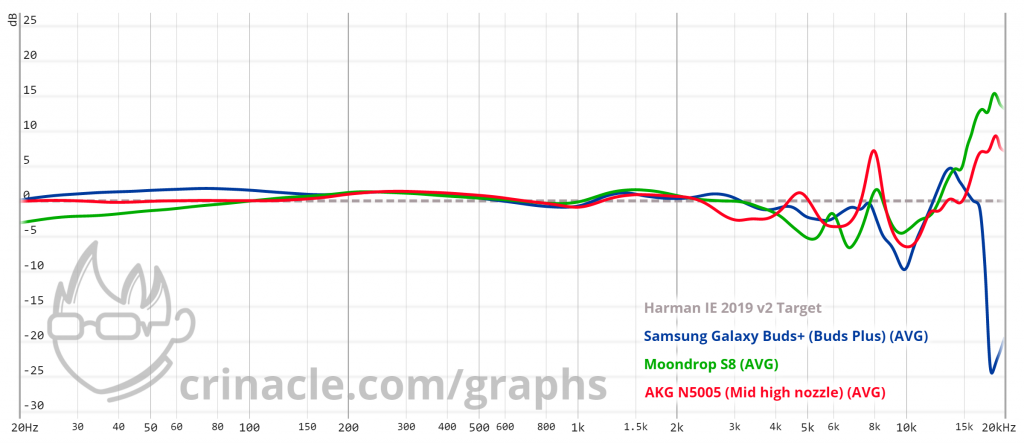
Even against AKG’s own attempt at Harman (that retails for a cool $1,000), it seems that the Buds+ are just a tad closer to the target.
The other obvious comparison would be against the original Galaxy Buds, shown below:
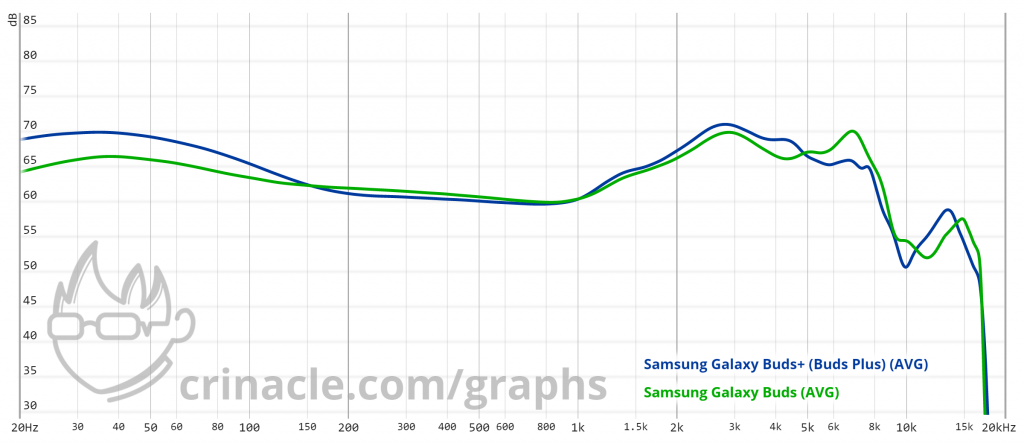
The big difference would be in the sub-bass regions (20Hz to 150Hz), where the original Buds are relatively flat while the Buds+ has a more traditional Harman-style emphasis.
The smaller differences lie in the upper-midrange frequencies, where the Buds+ have the greater emphasis around 3kHz while the original Buds peak at around 7kHz. However, this is likely due to the shallower insert of the original Buds, resulting in its resonance point shifting down from the usual reference of 8kHz (read more here).
The Subjective
General Sound descriptions
Objectively speaking, the Buds+ can be classified as “Harman-neutral”. However in subjective listening, I’d classify it as a V-shaped (possibly U-shaped) signature given its considerable sub-bass emphasis and potent higher frequency boost.
This is more my criticism of the Harman IE target than the Buds+ itself, but regardless: the Buds+ are a very intense sounding set of in-ears, with the focus primarily placed on the upper harmonics which can make instruments and vocals sound clearer and more forward, but also shouty and “in your face” when overdone. And in my opinion, the Buds+ have gone a little too far.
The treble timbre is a bit of problem in the Buds+ as well, particularly pertaining to percussive instruments such as hi-hats and cymbals. It’s hard to describe what exactly is wrong with the Buds+’s presentation of the treble, though I would say that it reminds me a bit of that bitcrushed effect at times. Perhaps it’s due to the Bluetooth bandwidth, perhaps it’s due to the frequency response, who knows.
But when it comes to the bass response, that’s where the Buds+ shows its true strength. In terms of all the metrics that I look for in an IEM’s bass response such as decay, control and separation from the midrange frequencies, the Buds+ is… virtually perfect. Even in the context of other wired IEMs. While the bass is very clearly emphasised with satisfying impact and deep downward extension, it remains free from smearing or masking of the midrange frequencies, presenting itself clearly but not overshadowing anything else.
Comparison with Galaxy Buds (original)
It’s probably a copout to say “just refer to the graphs”, but the measurements really show it best. The Buds+ have a greater sub-bass and upper-midrange emphasis, though the original Buds may have more treble given its shallower fit.
Now the original Buds’ bass isn’t bad by any means, but the Buds+ demonstrates its superiority in low-end reproduction very clearly in direct comparative testing. The Buds+ are definitely more satisfying and deep, but more than that; it still retains the original Buds’ control and finesse despite the added bass quantity.
The divisive point, as you can already tell, is in the higher frequencies.
The original Galaxy Buds have been my sleeping IEMs for quite a while now, and it’s in this regard that I don’t think the Buds+ will be replacing it anytime soon. The original Buds are already a pretty shouty and intense set of IEMs, so for the Buds+ to take that intensity and increase it even further… it’s way too much for me. And the interesting thing is, despite both sets measuring similarly even in the treble regions, the original Buds doesn’t seem to have the treble timbre issues of the Buds+.
In terms of the question “is the Galaxy Buds+ better than its predecessor?”, my answer to that would be no. I expect disagreements on this front of course; I’m just one guy on the internet.
Conclusion
The Galaxy Buds+ is an interesting refinement on the well-received original, and has certainly achieved its main goal of keeping parity to the Harman In-Ear target.
However, in terms of subjective listening, even the improvements in bass response do not outweigh what I personally perceive to be shortcomings in the higher frequencies. It is still a great TWS IEM that continues to sit at the top of the market for now, but as someone who expects the sucessor to be an improvement, I can’t help but to feel a slight twinge of disappointment.
Support me on Patreon to get access to tentative ranks, the exclusive “Clubhouse” Discord server and/or access to the Premium Graph Comparison Tool! My usual thanks to all my current supporters and shoutouts to my big money boys:
“McMadface”
“Desertscrub”
Denis
Nicholas
Alexander
“Galactus”
Andrew






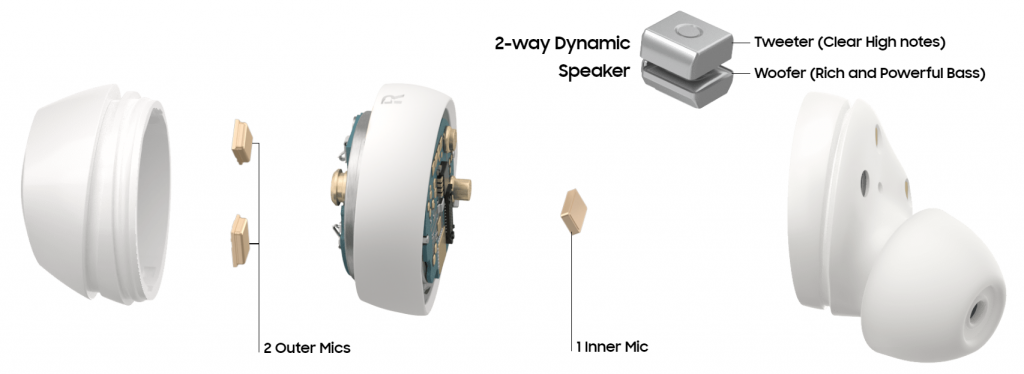
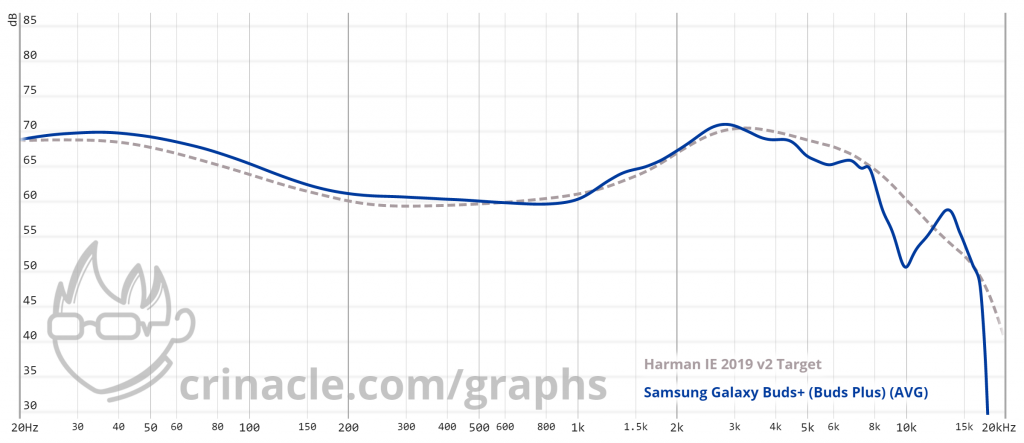
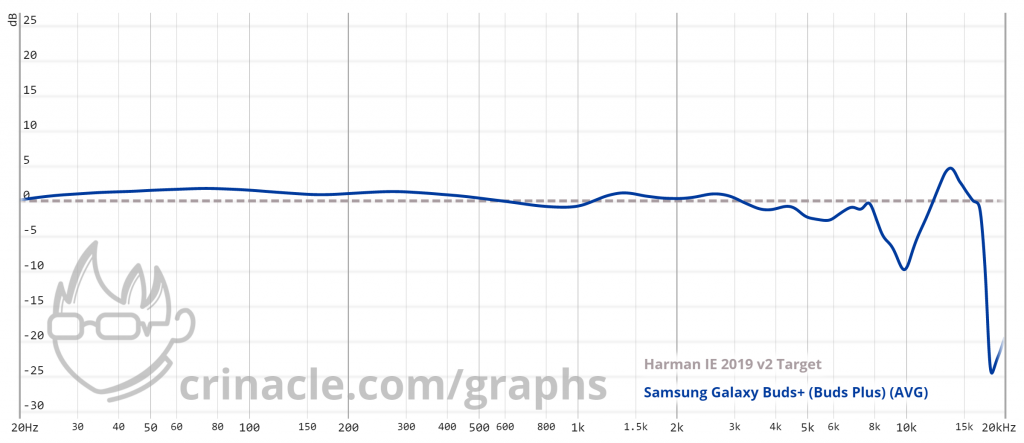



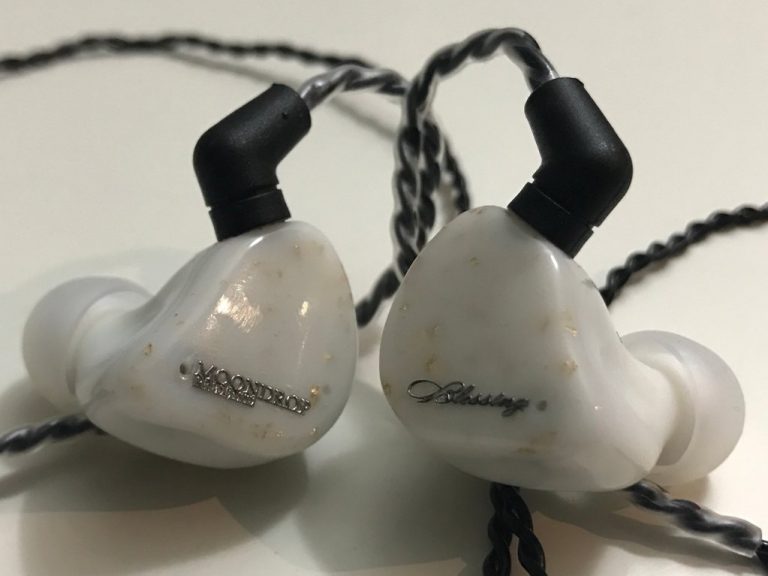







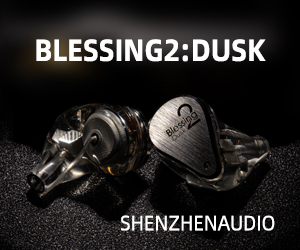


22 thoughts on “The Audiophile’s Perspective: Samsung Galaxy Buds+ Review”
Do you use a Samsung phone? Asking since Samsung’s codec is probably going to give the best SQ
Thanks for the review, I was dying to know for weeks and it seems like my guess was correct that they would make the bass better but find some way to alter the rest for the worse. It got better than what I expected. When they decided to use dual dynamic drivers as a woofer and tweeter, it was going to make their job harder as it usually isn’t done so it isn’t a surprise to me that they didn’t surpass the originals.
I took your word for it last time with the Galaxy Buds and they were exactly what I was looking for in terms of a balanced sound with an upper mid boost so I’ll take your word for it this time. It helps that I tend to listen to “anime/game” vocal songs and soundtracks so the sound is made for that.
I actually enjoy the treble on the Galaxy Buds and I usually dislike treble in general (especially on songs with a emphasis on cymbals) so I’ll be sticking with the original Galaxy Buds as I have other IEMs for bass delivery. I even got them new locally for a cheap price (they are real and not fakes) so I have nothing to complain about with them.
Yes, a Samsung Galaxy S10
Do you recommend using some EQ presets from the galaxy wearable app or using them without any EQ?
Sorry, but there are 6 modes and you didn’t say anything about them?
I watched a video in which a guy showed that galaxy buds defaulted to ‘dynamic’ mode whereas galaxy buds+ defaulted to a new ‘normal’ mode
It would definitely help if the different modes were measured too.
Right. I found out that (at least for my ears) the “normal” mode sounds best, whereas the “Dynamic” mode over-emphasizes the high mids, IMO.
I can hear the issue when I leave them on the out of box setting of ‘Normal’. Putting it back to dynamic like I had on the OG Buds and the bass still kicks perfectly, but the trilly highs/mids are brought back into clarity. I’m actually blown a way by the bass on them, and the uppers are not really any different than they were on the OG.
Can you review the aviot te-bd21f? Would like to see how multi driver tws actually fare
No one has proven there to be a superior frequency response than the harman IE target. Given a proper seal this IEM produces the best possible music listening experience with an earphone. Thank you for being the first to provide the measurements that prove this without a doubt.
Bitcrusher was my thought as well. Thinking about bringing them back to the store.
Even setting to soft – different EQ preset – doesn’t get rid of that effect.
Maybe some kind of Exciter even. I have no idea what’s going on but it’s really ear piercing.
Please review Samsung akg earbud.
On the Buds+, the EQ setting actually persists and stick to the Buds. So I think you should have maybe accounted for and reviewed the various EQ modes.
Please review Samsung akg earbud.
Nice review as usual! But can you let us know what was the equalizer mode for the galaxy Buds+ – Dynamic or normal?
Galaxy buds defaults to Dynamic while Buds+ defaults to normal when new.
Thank You!
Are you sure?
I could have sworn they are dynamic when set up…but maybe that is just the app doing that and it was before i installed it
the sound separation is better than anything I heard (I’ve had about 10 IEMs, ranging $5-$300), but there’s just a lack of bass. Hard to listen to for awhile. I wonder if it is the driver size. 1 big DD has probably bigger bass than 2 small DD. That small housing must limit the driver size too. Also, I keep getting more bass when listening on phone devices than my PC. My PC is bluetooth 4.1 though, maybe that’s why it sounds different? I also disabled all EQ on the phone and in the app.
Would be curious if you could do a measurement with the latest firmware. There was an update in April that changed the ambient sound feed and the tuning. I get the impression they are slightly less bright and have deeper bass now.
got them two days ago and they’re going back. might’ve gotten the faulty set (two units at once though?) but the treble is unacceptable “bitcrushed” is an understatement, some frequencies sound like they’ve been recorded in 96 kbps. avoid.